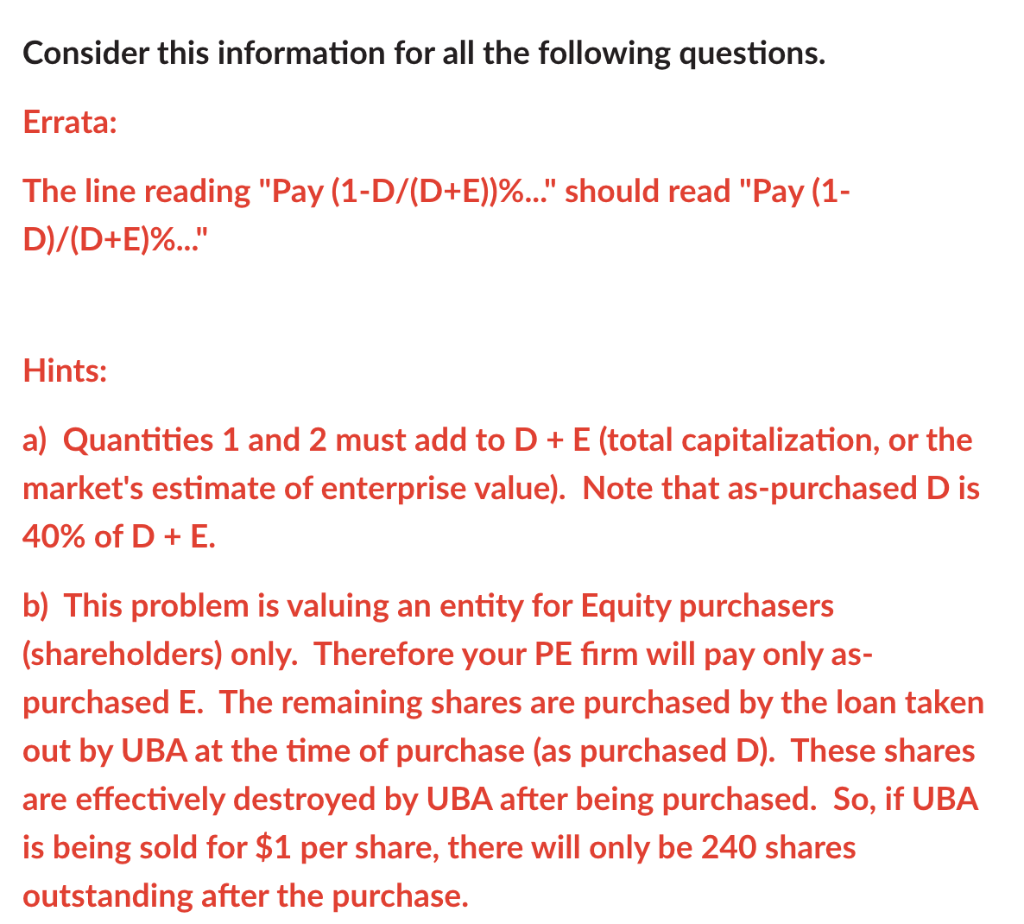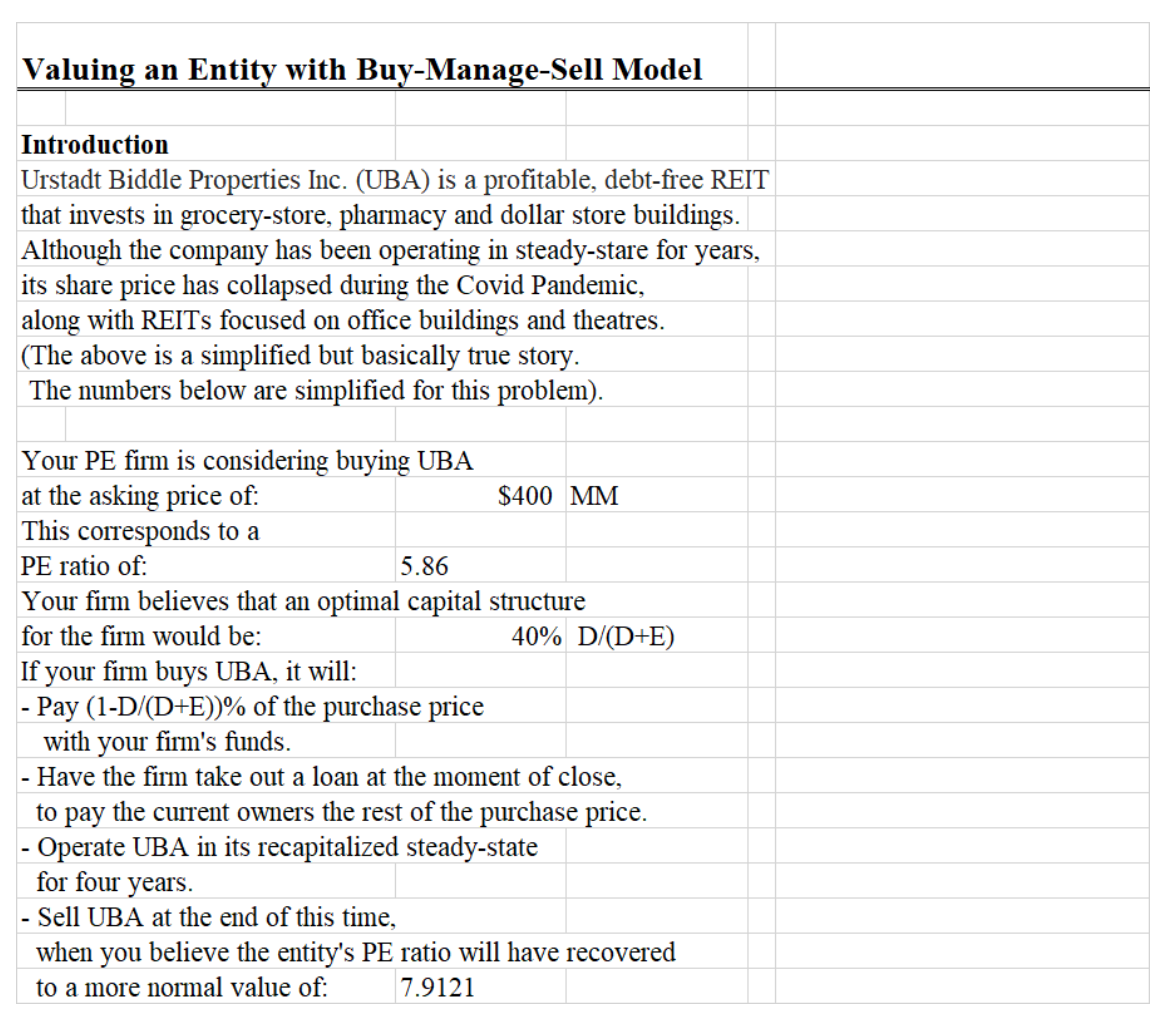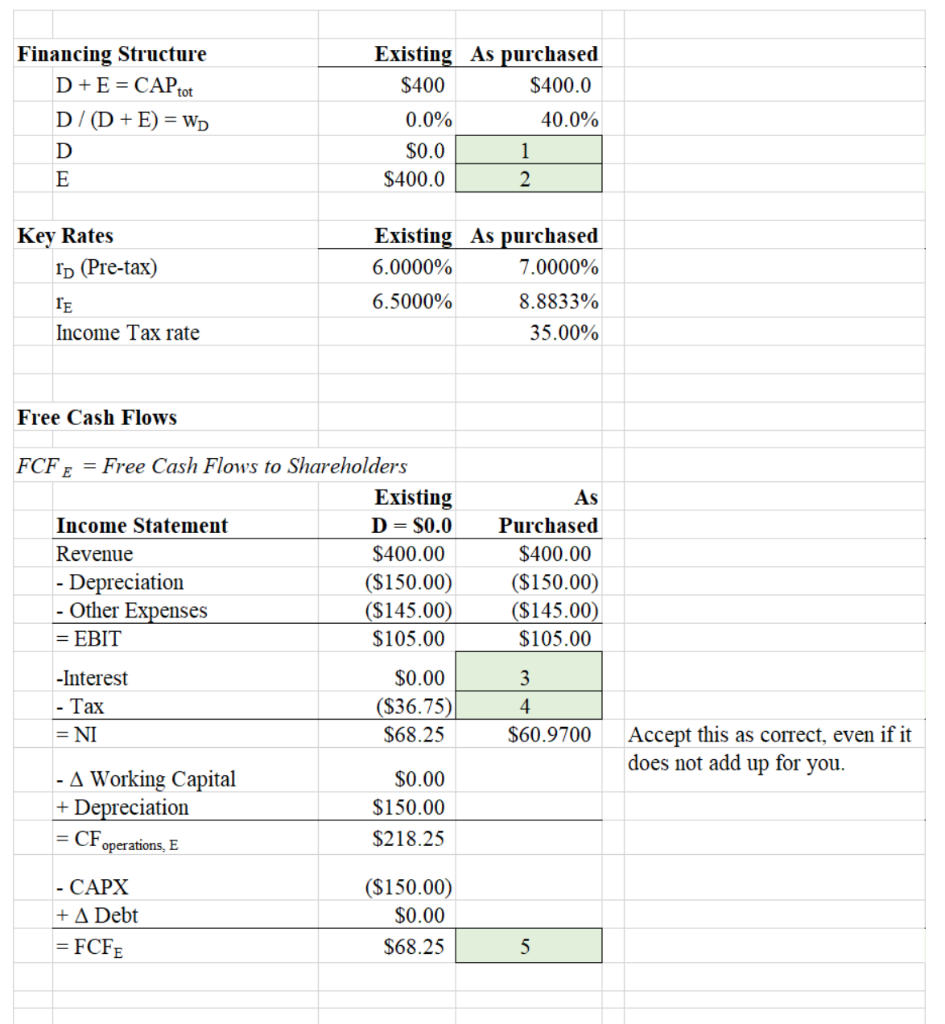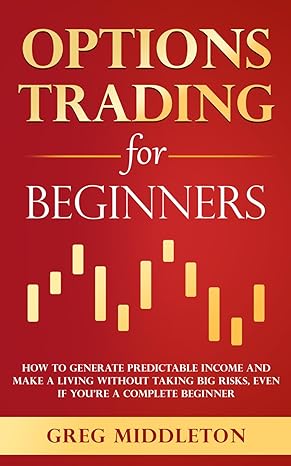Answered step by step
Verified Expert Solution
Question
1 Approved Answer
1. What is the absolute value of quantity 4? 2. What is quantity 5? 3. What is quantity 6? 4. What is quantity 7? Consider




1. What is the absolute value of quantity 4?
2. What is quantity 5?
3. What is quantity 6?
4. What is quantity 7?
Consider this information for all the following questions. Errata: The line reading "Pay (1-D/(D+E))%.." should read "Pay (1- D)/(D+E)%..." Hints: a) Quantities 1 and 2 must add to D + E (total capitalization, or the market's estimate of enterprise value). Note that as-purchased D is 40% of D + E. b) This problem is valuing an entity for Equity purchasers (shareholders) only. Therefore your PE firm will pay only as- purchased E. The remaining shares are purchased by the loan taken out by UBA at the time of purchase (as purchased D). These shares are effectively destroyed by UBA after being purchased. So, if UBA is being sold for $1 per share, there will only be 240 shares outstanding after the purchase. Valuing an Entity with Buy-Manage-Sell Model Introduction Urstadt Biddle Properties Inc. (UBA) is a profitable, debt-free REIT that invests in grocery-store, pharmacy and dollar store buildings. Although the company has been operating in steady-stare for years, its share price has collapsed during the Covid Pandemic, along with REITs focused on office buildings and theatres. (The above is a simplified but basically true story. The numbers below are simplified for this problem). Your PE firm is considering buying UBA at the asking price of: $400 MM This corresponds to a PE ratio of: 5.86 Your firm believes that an optimal capital structure for the firm would be: 40% D/(D+E) If your firm buys UBA, it will: - Pay (1-D/(D+E))% of the purchase price with your firm's funds. - Have the firm take out a loan at the moment of close, to pay the current owners the rest of the purchase price. - Operate UBA in its recapitalized steady-state for four years. - Sell UBA at the end of this time, when you believe the entity's PE ratio will have recovered to a more normal value of: 7.9121 Financing Structure D+E = CAP tot D/(D + E) = WD D E Existing As purchased $400 $400.0 0.0% 40.0% $0.0 1 $400.0 2. Key Rates fp (Pre-tax) TE Income Tax rate Existing As purchased 6.0000% 7.0000% 6.5000% 8.8833% 35.00% Free Cash Flows FCF E = Free Cash Flows to Shareholders Existing Income Statement D=$0.0 Revenue $400.00 - Depreciation ($150.00) - Other Expenses ($145.00) = EBIT $105.00 As Purchased $400.00 ($150.00) ($145.00) $105.00 -Interest - Tax = NI $0.00 ($36.75) $68.25 3 4 $60.9700 Accept this as correct, even if it does not add up for you. - A Working Capital Depreciation + $0.00 $150.00 $218.25 = CF operations, E - CAPX + A Debt = FCFE ($150.00) $0.00 $68.25 5 Valuation at T=0 14 NPVE = -Pp, E + E FCFE, / (1+re)Ti + Sp, E/ (1+re) T4 - i Sp.E 6 NPVE 7 Consider this information for all the following questions. Errata: The line reading "Pay (1-D/(D+E))%.." should read "Pay (1- D)/(D+E)%..." Hints: a) Quantities 1 and 2 must add to D + E (total capitalization, or the market's estimate of enterprise value). Note that as-purchased D is 40% of D + E. b) This problem is valuing an entity for Equity purchasers (shareholders) only. Therefore your PE firm will pay only as- purchased E. The remaining shares are purchased by the loan taken out by UBA at the time of purchase (as purchased D). These shares are effectively destroyed by UBA after being purchased. So, if UBA is being sold for $1 per share, there will only be 240 shares outstanding after the purchase. Valuing an Entity with Buy-Manage-Sell Model Introduction Urstadt Biddle Properties Inc. (UBA) is a profitable, debt-free REIT that invests in grocery-store, pharmacy and dollar store buildings. Although the company has been operating in steady-stare for years, its share price has collapsed during the Covid Pandemic, along with REITs focused on office buildings and theatres. (The above is a simplified but basically true story. The numbers below are simplified for this problem). Your PE firm is considering buying UBA at the asking price of: $400 MM This corresponds to a PE ratio of: 5.86 Your firm believes that an optimal capital structure for the firm would be: 40% D/(D+E) If your firm buys UBA, it will: - Pay (1-D/(D+E))% of the purchase price with your firm's funds. - Have the firm take out a loan at the moment of close, to pay the current owners the rest of the purchase price. - Operate UBA in its recapitalized steady-state for four years. - Sell UBA at the end of this time, when you believe the entity's PE ratio will have recovered to a more normal value of: 7.9121 Financing Structure D+E = CAP tot D/(D + E) = WD D E Existing As purchased $400 $400.0 0.0% 40.0% $0.0 1 $400.0 2. Key Rates fp (Pre-tax) TE Income Tax rate Existing As purchased 6.0000% 7.0000% 6.5000% 8.8833% 35.00% Free Cash Flows FCF E = Free Cash Flows to Shareholders Existing Income Statement D=$0.0 Revenue $400.00 - Depreciation ($150.00) - Other Expenses ($145.00) = EBIT $105.00 As Purchased $400.00 ($150.00) ($145.00) $105.00 -Interest - Tax = NI $0.00 ($36.75) $68.25 3 4 $60.9700 Accept this as correct, even if it does not add up for you. - A Working Capital Depreciation + $0.00 $150.00 $218.25 = CF operations, E - CAPX + A Debt = FCFE ($150.00) $0.00 $68.25 5 Valuation at T=0 14 NPVE = -Pp, E + E FCFE, / (1+re)Ti + Sp, E/ (1+re) T4 - i Sp.E 6 NPVE 7Step by Step Solution
There are 3 Steps involved in it
Step: 1

Get Instant Access to Expert-Tailored Solutions
See step-by-step solutions with expert insights and AI powered tools for academic success
Step: 2

Step: 3

Ace Your Homework with AI
Get the answers you need in no time with our AI-driven, step-by-step assistance
Get Started


